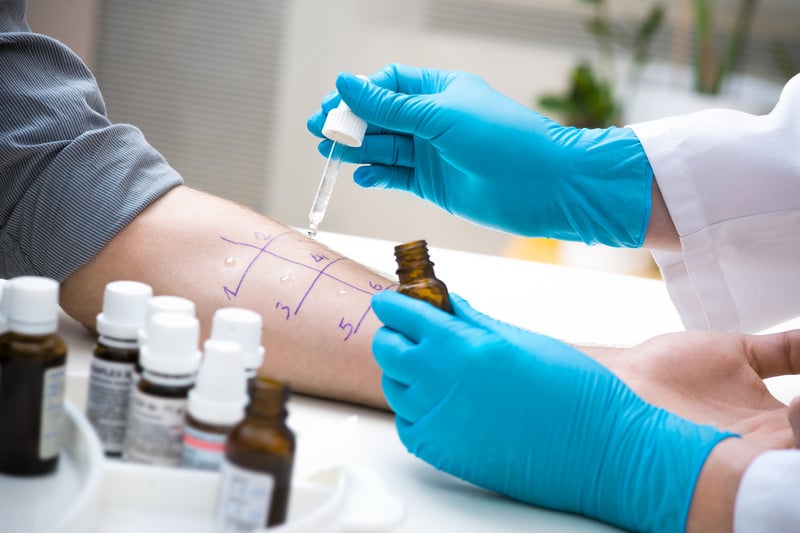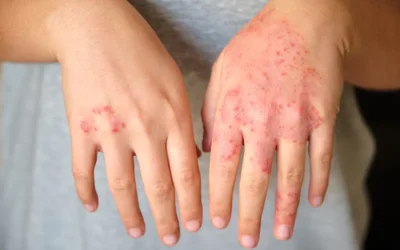Allergy season is here. Spring allergies are typically triggered by pollen and often continue into the summer. Physicians’ practices are busy dealing with patients complaining of hay fever (allergic rhinitis) symptoms such as watery eyes, stuffy nose, sneezing fits, wheezing, and rashes. Drug allergies, food allergies, and skin allergies are other common conditions that allergists treat. As they address patient concerns, providers need to ensure proper documentation and billing of allergy testing and treatment services. In fact, according to an AAPC report, allergy services are under scrutiny by third-party payer investigation units because it was found that many practices code and bill these services incorrectly. Fortunately, expert medical billing and physician coding services are available to help practices manage claims submission for optimal reimbursement.
Diagnosing Allergic Rhinitis
Allergic rhinitis or hay fever can be seasonal or perennial. Symptoms of seasonal allergic rhinitis are usually caused by allergic sensitivity to airborne mold spores or to pollens from grass, trees and weeds. The condition peaks in spring, summer and early fall. On the other hand, perennial allergic rhinitis is caused by dust mites, pet hair or dander, cockroaches, mold, and rarely, underlying or hidden food allergies. Perennial allergic rhinitis symptoms are present year-round. Physicians diagnose seasonal allergies during a physical exam based on specific symptoms and their duration and timing. Skin testing is the simplest, and the most sensitive and cost-effective method to identify the type of allergen that caused the allergy.
The ICD-10 codes for Allergic Rhinitis are
- J30.0 Vasomotor Rhinitis
- J31.0 Chronic Rhinitis NOS
- J30.1 Allergic rhinitis due to pollen
- J30.2 Other Season allergic rhinitis
- J30.5 Allergic rhinitis due to food
- J30.81 Allergic rhinitis due to animal hair and dander (cat, dog)
- J30.89 Other allergic rhinitis
- J30.9 Allergic rhinitis, unspecified
Allergy Testing and Treatment Codes
Allergy testing typically involves injecting a small amount of the allergen under the skin and observing the skin for a reaction. Allergy treatment includes medications such as antihistamines, cromolyn sodium to prevent the release of histamine, and decongestants, and immunotherapy which is available as injections and sublingual tablets. Immunotherapy involves introducing increasing amounts of allergic extract into the body regularly until the patient becomes tolerant of the allergens.
Payers will reimburse for the provision of medically necessary clinically indicated allergy testing and allergy immunotherapy services. For instance, Harvard Pilgrim Health Care covers the following allergy testing services and treatments:
Testing:
- Direct skin testing and intradermal testing. Percutaneous (scratch puncture, prick) with allergenic extracts rendered by a physician only
- Intracutaneous tests with extracts rendered by a physician only
- Blood tests such as IgE, RAST, PRIST, ELISA and MAST
- Patch testing rendered by a physician only
- Challenge testing, including bronchial, nasal and conjunctival
- Photo patch testing
- Leukocyte histamine release testing
- Photo tests
- In vitro testing for IgE antibodies
Treatments:
- Antigens, extracts and venoms used in allergy treatment
- Enteral feedings for neonates in accordance with medical policy criteria
- Epinephrine kits prescribed by the physician
- Preparation and/or provision of the allergy immunotherapy injection(s)
Coding and Billing for Allergy Testing
Immunotherapy preparation and provision correctly, providers should be well-versed in the diagnostic codes, CPT guidelines and payer rules. The requirements for correct reporting of allergy testing are as follows:
Supervision Requirements: The most common CPT codes for allergy testing are: 95004–95079 Allergy testing
Coders need to know supervision requirements to assign the correct code. Allergy testing is usually done by medical assistants, nurses, nurse allergists, and other non-physician providers. AAPC points out that knowing supervision requirements is necessary to code allergy testing correctly. General supervision means the procedure is performed under the physician’s overall direction and control. Direct supervision means the physician must be present in the room and immediately available to provide assistance and direction when the procedure is performed. Personal supervision is required when the diagnostic procedure pose a high risk to the patient.
Direct supervision: The allergy testing codes used when direct supervision is required are:
95004 Percutaneous tests (scratch, puncture, prick) with allergenic extracts, immediate type reaction, including test interpretation and report by a physician, specify number of tests
95024 Intracutaneous (intradermal) tests with allergenic extracts, immediate type reaction, including test interpretation and report by a physician, specify number of tests
95027 Intracutaneous (intradermal) tests, sequential and incremental, with allergenic extracts for airborne allergens, immediate type reaction, including test interpretation and report by a physician, specify number of tests
95028 Intracutaneous (intradermal) tests with allergenic extracts, delayed type reaction, including reading, specify number of tests
95044 Patch or application test(s) (specify number of tests)
95052 Photo patch test(s) (specify number of tests)
95056 Photo tests
Personal supervision: The codes for high risk testing procedures that require personal supervision are:
95060 Ophthalmic mucous membrane tests
95070 Inhalation bronchial challenge testing (not including necessary pulmonary function tests); with histamine, methacholine, or similar compounds
95071 Inhalation bronchial challenge testing (not including necessary pulmonary function tests); with antigens or gases, specify
- Type of Skin Test: Allergy skin tests include: prick or scratch testing (most common), incutaneous testing, and sequential and incremental testing.
- Use code 95004 for the scratch test, – the units are counted by the number of allergens tested
- Use codes 95017 and 95017 for Allergy testing, any combination of percutaneous (scratch, puncture, prick) and intracutaneous (intradermal), sequential and incremental…
Code 95017 with venoms, immediate type reaction, including test interpretation and report, specify number of tests
Code 95018 with drugs or biologicals, immediate type reaction, including test interpretation and report, specify number of tests involve any combination of percutaneous (scratch, puncture, prick), intracutaneous (intradermal), sequential and incremental testing
For 95017 and 95018, the number of scratch, puncture, or prick tests and incutaneous tests are counted per allergen; the number of dilutions, or the number of patient sticks performed during the sequential and incremental testing should be added.
- Immunotherapy Serum Preparation: Immunotherapy usually begins with highly diluted antigen, which is gradually increased over time in order to allow patients to increase their tolerance to what they are allergic to. Code 95165 is commonly used forthe billing provision of serum for patients with Medicare Part B: Code 95165 Professional services for the supervision of preparation and provision of antigens for allergen immunotherapy; single or multiple antigens (specify number of doses). To avoid overbilling, Medicare Part B units for this service should be calculated correctly.
- Administration of Allergy Shots: Allergy immunotherapy can be administered in different ways such as by the primary care physician or self-administration by the patient. The codes reported would depend on how allergy immunotherapy is performed.
- Evaluation and management (E/M): Reporting E/M codes with allergy testing or allergy immunotherapy is appropriate only if a significant, separately identifiable service is administered. Modifier – 25 should be used with the E/M code when appropriate to indicate it as a separately identifiable service. CPT guidelines state that if E/M services are reported, the separately identifiable service should be documented in the medical record.
Most seasonal allergies occur between spring and fall. As physicians provide allergy testing and treatment services, partnering with an experienced medical billing and coding company can help them ensure correct reporting of services to optimize practice reimbursement.




